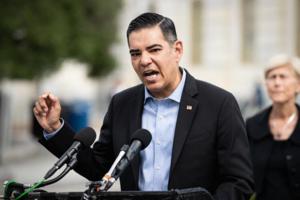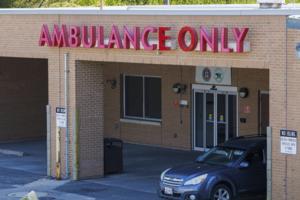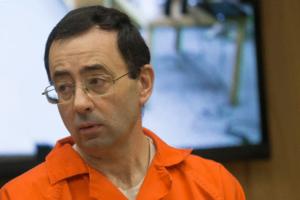Current News
/ArcaMax
News briefs
Holiday heart risk: Overindulgence, stress, cold increase heart attacks
BALTIMORE — Eat, drink and enjoy the outdoors and family gatherings — in moderation, say those who see an increase in heart emergencies during the holiday season.
Cardiac emergencies spike 30% on Christmas Eve, according to American Medical Response, which provides ...Read more

China's military buildup makes US vulnerable, Pentagon report says
WASHINGTON — The Chinese military is in the midst of a “historic military buildup” that has made the U.S. homeland “increasingly vulnerable,” according to the latest edition of a Pentagon report on the capabilities of the Chinese military, presenting a challenge to President Donald Trump’s plans for new limitations on U.S., Chinese ...Read more

Atlantic City officials, community leaders condemn 'aggressive' and 'appalling' ICE activity in the area
ATLANTIC CITY, N.J. — Elected officials, religious leaders and community activists gathered Tuesday in City Hall to condemn recent “aggressive” and “appalling” U.S. Immigration and Customs Enforcement activity in the resort town.
“The reason I’m here is because just last week, our community was attacked,” said Alexander Mendoza,...Read more

Claims about Trump in Epstein files are 'untrue,' the Justice Department says
WASHINGTON — Tips provided to federal investigators about Donald Trump's alleged involvement in Jeffrey Epstein's schemes with young women and girls are "sensationalist" and "untrue," the Justice Department said on Tuesday, after a new tranche of files released from the probe featured multiple references to the president.
The documents ...Read more
Embattled Planned Parenthood Southeast president resigns
The interim president and CEO of Planned Parenthood Southeast has resigned, a letter from the board of directors to staff said.
Mairo Akpose’s resignation comes about two months after a group of former and current Planned Parenthood Southeast staff and board members launched a website and Instagram account making a variety of claims, ...Read more
Maryland climate commission calls for state action amid budget pressure
The Maryland Commission on Climate Change released its 2025 annual report Tuesday, offering a new set of recommendations aimed at helping the state meet aggressive greenhouse gas reduction goals while preparing communities for the growing impacts of climate change.
In the 22-page report, the commission outlined both advances and challenges as ...Read more

Orlando Sentinel sues state for Pulse crosswalk records
ORLANDO, Fla. — The Orlando Sentinel sued the Florida Department of Transportation on Tuesday, seeking to compel the release of public records related to the state’s decision to remove a rainbow crosswalk outside the Pulse nightclub where 49 people were gunned down almost a decade ago.
The Sentinel requested a variety of documents in late ...Read more
Trump administration review of federal subsistence program seen as 'serious threat' by Alaska Federation of Natives
ANCHORAGE, Alaska — The Trump administration wants the public to weigh in as it prepares for a review of the federal subsistence program in Alaska, an action that the state's largest Alaska Native group fears will weaken the program.
The federal government's review stems from a petition by Safari Club International in May asking the federal ...Read more

Delaware state trooper killed while responding to active shooter at DMV
A Delaware State Police trooper was shot and killed while responding to a report of an active shooter on Tuesday in Wilmington.
“One Delaware State Trooper has been confirmed killed during this incident,” Delaware State Police said on X, formerly known as Twitter. “We are continuing to assess additional injuries.”
The suspected shooter...Read more

Freed from ICE facility, activist Jeanette Vizguerra urges detainees: 'Don't give up. Keep fighting'
DENVER — Twenty-four hours after she was released from immigration detention, Jeanette Vizguerra stood on the steps of a federal courthouse in downtown Denver on Tuesday and pledged to keep fighting the crackdown that still threatens to remove her from the country.
Her attempts to regain her freedom, even temporarily, had galvanized ...Read more

SEC was investigating Epstein's financial activities, new file release shows
WASHINGTON — Jeffrey Epstein’s August 2019 death in federal custody put an end to a criminal investigation into his sex crimes that had been brought a month earlier by federal prosecutors in the Southern District of New York.
It might have also put an end to a nascent financial investigation into the deceased financier by the U.S. ...Read more

US sanctions former EU official, others in swipe at Europe
WASHINGTON — The Trump administration on Tuesday imposed visa sanctions on former European Union Commissioner Thierry Breton and four other people for trying to make American tech companies police political speech on their platforms.
“For far too long, ideologues in Europe have led organized efforts to coerce American platforms to punish ...Read more

Esparto victims' families file $35 million claim. Yolo County, fire officials, fireworks firms named
SACRAMENTO, Calif. — The families of seven people killed in the July 1 fireworks explosion in Esparto have filed a $35 million claim against Yolo County, state fireworks regulators and several public officials, alleging widespread negligence that allowed an illegal and unsafe fireworks operation to continue.
The claim is a precursor to any ...Read more

'Calculated, cold-blooded': Melodee Buzzard's mother fatally shot her in the head, authorities say
LOS ANGELES — Missing California girl Melodee Buzzard, 9, was found dead in a rural part of Utah's Wayne County from multiple gunshot wounds to the head, authorities said. Her mother, Ashlee Buzzard, was arrested Tuesday on suspicion of murder.
Cartridge cases found at the Utah crime scene in December were linked to a cartridge case that was ...Read more

Supreme Court rules against Trump, bars National Guard deployment in Chicago
WASHINGTON — The Supreme Court ruled against President Donald Trump on Tuesday and said he did not have legal authority to deploy the National Guard in Chicago to protect federal immigration agents.
Acting on a 6-3 vote, the justices denied Trump's appeal and upheld orders from a federal district judge and the U.S. 7th Circuit Court of ...Read more

Tulsi Gabbard's remarks on Dearborn, 'Islamist ideology' rile residents, activists
DETROIT — Director of National Intelligence Tulsi Gabbard's recent comments about Dearborn and Muslims stirred concerns among some residents and activists with ties to the city who say the community and the beliefs of those living there have not been depicted accurately.
Gabbard said at Turning Point USA’s AmericaFest conference Sunday in ...Read more

The DOJ is still hiding the names of Epstein's co-conspirators
The FBI was looking into at least 10 of Jeffrey Epstein’s “co-conspirators” in 2019, new documents released Tuesday revealed for the first time, but the Department of Justice blacked out many of their names without explanation or justification.
The continued withholding of information — particularly about those who witnessed, ...Read more

One thousand Pennsylvanians now dropping health insurance daily
PITTSBURGH — Nansi Armstrong is living in America's painful health insurance purgatory: earning too much to qualify for Medicaid but not enough to cover premiums set to double next year.
The 48-year-old mother works multiple jobs, including a full-time gig as an office manager for a Harrisburg law firm that comes without benefits.
At $650 ...Read more

FBI confirms Jeffrey Epstein letter to Larry Nassar is fake
A letter released this week that appeared to be penned by Jeffrey Epstein to disgraced USA Gymnastics doctor Larry Nassar has since been confirmed as “fake” by the FBI.
The short, handwritten note was among the latest batch of files, made up of nearly 30,000 documents related to the Epstein investigation, released by the Justice Department ...Read more

Letter purportedly sent by Epstein to Nassar emerges; DOJ calls it fake
A letter that appears to have been written by Jeffrey Epstein to serial sex abuser Larry Nassar, a former Michigan State University doctor, is among a batch of documents released this week by the U.S. Department of Justice.
The short message references President Donald Trump and, according to another released file, was submitted by the FBI for ...Read more
Popular Stories
- Grand jury declines to indict man who shot, killed Kentucky State student
- Latest Epstein files release shows scope of DOJ probes into Epstein, Maxwell
- Former Nebraska Sen. Sasse faces terminal diagnosis
- Mayor-elect Mamdani appointing former EMS head Lillian Bonsignore as new FDNY commissioner, sources say
- Santa suits up as ICE agent in AI-generated clip shared by DHS





